Across the sprawling grasslands of Africa, a striking avian hunter patrols the landscape with precise, calculated movements. The secretary bird (Sagittarius serpentarius), with its eagle-like body perched atop crane-like legs, has developed one of the most fascinating hunting techniques in the animal kingdom. Unlike other birds of prey that rely primarily on their beaks and talons, secretary birds are famous for their distinctive stomping behavior – literally kicking their prey to death with incredible force and accuracy. This unique hunting method has fascinated scientists and bird enthusiasts alike, raising questions about the evolution, mechanics, and purpose behind this remarkable adaptation. In this comprehensive guide, we’ll explore the fascinating world of secretary birds and decode the science and strategy behind their signature stomping technique.
The Remarkable Secretary Bird: An Introduction to Africa’s Stomping Predator
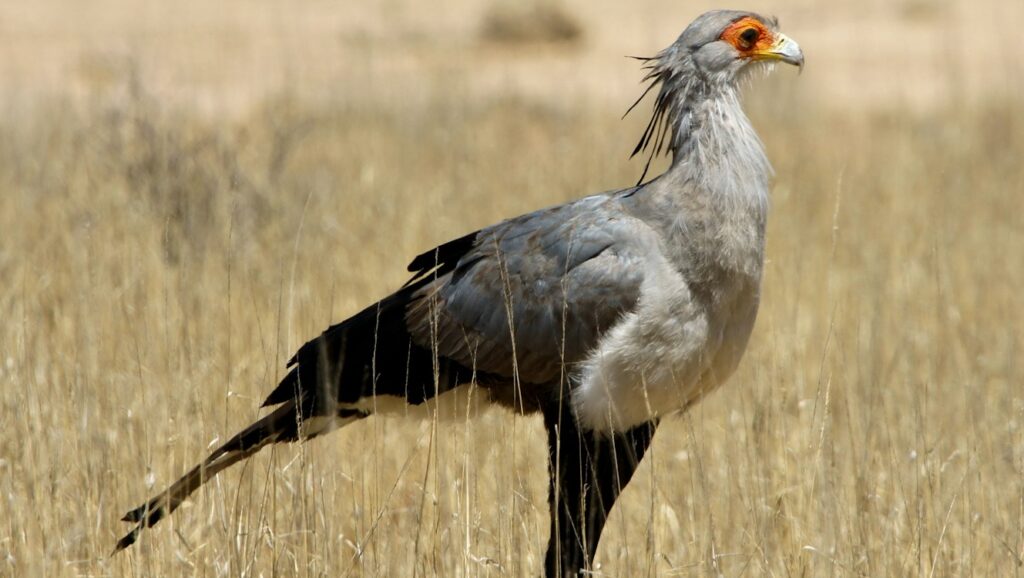
Standing up to 4 feet tall with a wingspan that can exceed 6.5 feet, the secretary bird commands attention in its native African savanna habitat. These distinctive birds are immediately recognizable by their light gray bodies, black flight feathers, bare orange-red faces, and the crest of black feathers extending from the back of their heads that resembles quill pens tucked behind a secretary’s ear – the feature that likely inspired their name. Despite their eagle-like appearance from the neck up, secretary birds possess extraordinarily long legs that seem almost out of proportion with the rest of their body, a crucial adaptation for their terrestrial lifestyle. Unlike most raptors, secretary birds spend the majority of their time walking the grasslands, covering up to 20 miles daily as they search for prey, demonstrating a unique evolutionary path that combines the predatory nature of raptors with a ground-dwelling lifestyle more typical of wading birds.
Evolutionary Origins: How Secretary Birds Developed Their Unique Hunting Style
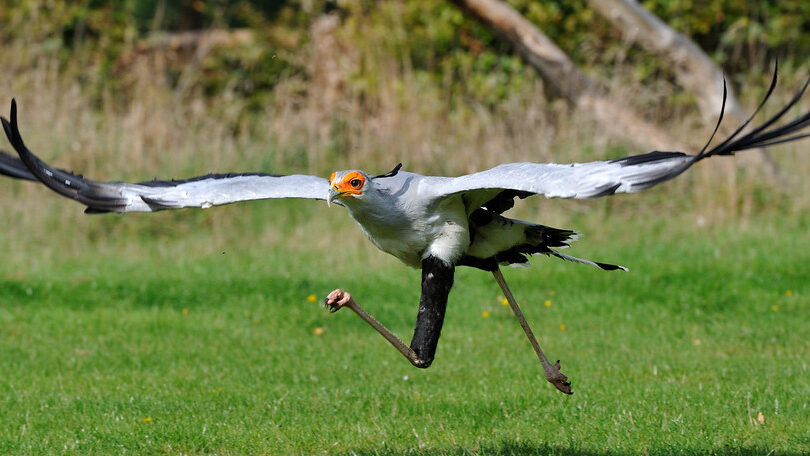
The secretary bird occupies a fascinating evolutionary niche, belonging to its own family Sagittariidae within the order Accipitriformes, which includes eagles, hawks, and other birds of prey. Fossil evidence suggests that secretary bird-like species have existed for over 40 million years, with their specialized hunting strategy evolving as an adaptation to the open grassland environments of Africa. Rather than developing the typical raptor approach of aerial hunting and grasping prey with talons, secretary birds evolved extremely long legs that allowed them to wade through tall grass and deal with dangerous prey from a safe distance. This evolutionary divergence represents a remarkable example of adaptive radiation, where a group of organisms evolves different traits to exploit different ecological niches. The stomping behavior likely developed as these birds adapted to hunting venomous snakes and other dangerous ground-dwelling prey, where maintaining distance while dispatching the prey provided a significant survival advantage.
The Mechanics of the Stomp: A Scientific Breakdown
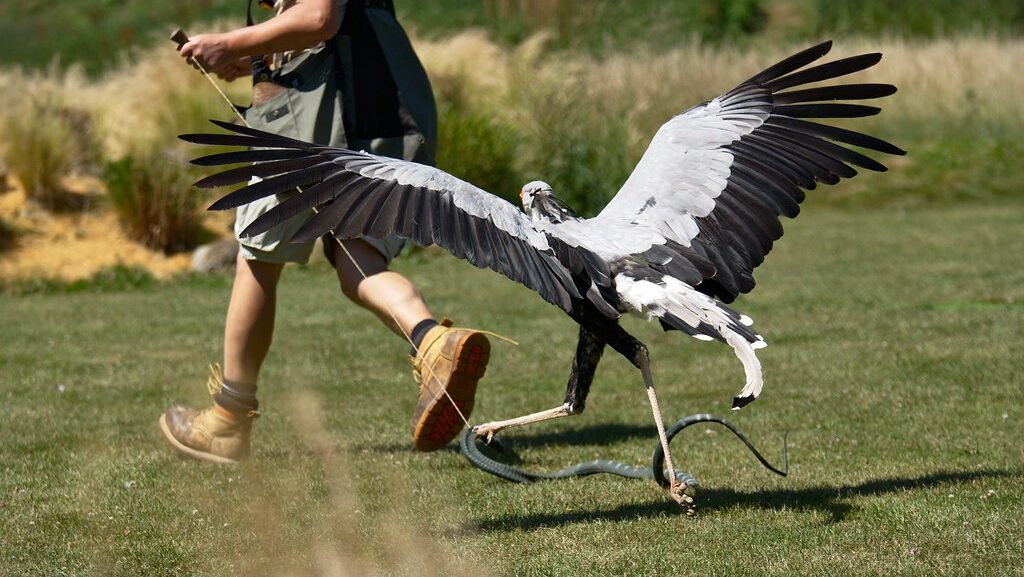
The secretary bird’s stomping technique is a marvel of biomechanical engineering, combining speed, precision, and devastating force. Recent scientific studies have measured the striking force of these birds, revealing that they can deliver up to 5 times their body weight in force through their feet when stomping – all executed with astonishing speed, as the strike itself takes just 15 milliseconds from initiation to impact. The bird typically begins by spotting prey in the grass, then rapidly extends its wings for balance before delivering precise, powerful kicks aimed directly at the prey’s head or vital areas. High-speed camera footage has revealed that secretary birds possess specialized ankle joints that act like springs, storing and releasing energy during the stomping motion to maximize force. The bird’s legs are not just weapons but precision instruments, with the stomping motion refined through thousands of years of evolution to deliver the perfect combination of speed and power while maintaining the bird’s balance throughout the attack sequence.
Snake Killers: Combating Venomous Prey with Strategic Stomping
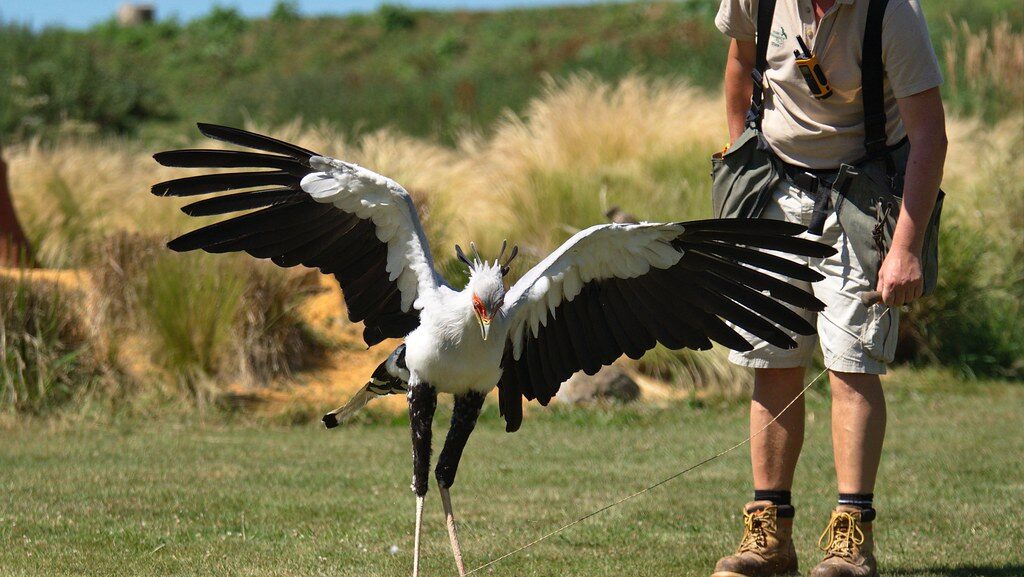
Secretary birds are renowned for their ability to hunt and kill venomous snakes, earning them respect and protection in many African cultures. When confronting dangerous serpents like cobras or black mambas, secretary birds employ a refined strategy that minimizes their exposure to potentially deadly bites. The bird typically approaches the snake with wings partially extended, creating a distracting display while simultaneously providing balance and a protective shield. With precise timing, the secretary bird delivers rapid, powerful stomps aimed at the snake’s head, often striking several times per second to overwhelm its prey before it can effectively strike back. The bird’s scale-covered legs provide natural protection against snake bites, while their exceptional vision allows them to track the swift movements of defensive serpents. This specialized predator-prey relationship demonstrates a fascinating evolutionary arms race, where the secretary bird’s stomping technique has developed specifically to counter the defensive capabilities of some of Africa’s most dangerous reptiles.
Beyond Snakes: The Diverse Diet of Stomping Secretary Birds
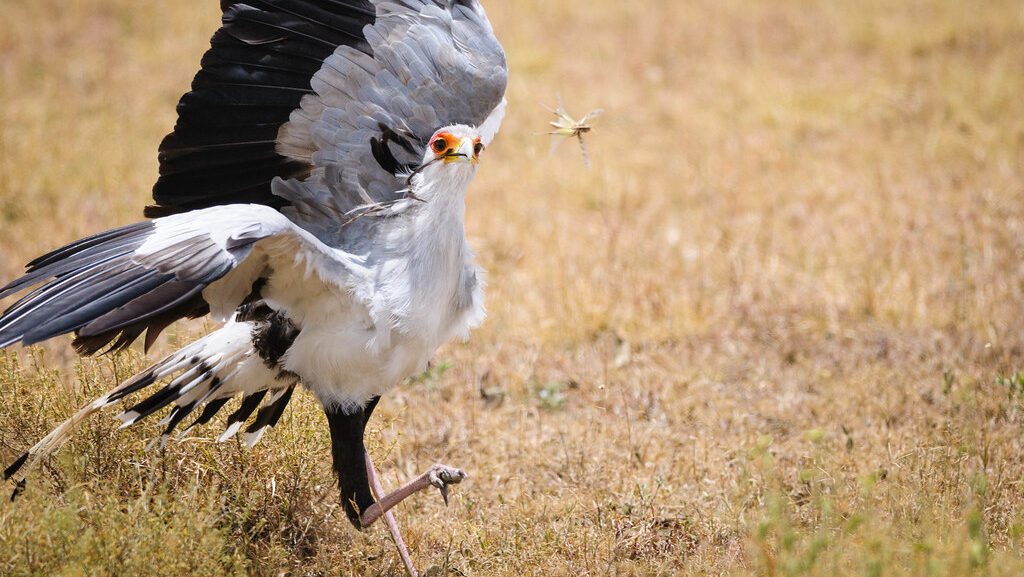
While secretary birds are famous for their snake-hunting prowess, their stomping technique is employed against a remarkably diverse range of prey animals. These versatile predators consume small mammals like rodents, hares, and mongoose, along with birds, lizards, amphibians, and even large insects like grasshoppers and beetles – all potentially dispatched with their powerful kicks. When hunting larger prey such as mongoose or hares, secretary birds often work in pairs, with one bird flushing the prey while the other delivers the killing stomps. The birds have also been observed stomping on tufts of grass or disturbing soil to flush out hidden insects or small vertebrates, demonstrating problem-solving intelligence in their foraging behavior. This dietary flexibility, combined with their unique hunting method, allows secretary birds to thrive in environments where food resources may be scarce or seasonal, giving them a competitive advantage over more specialized predators in the African grasslands.
The Secret Weapon: Specialized Anatomy for Precision Stomping
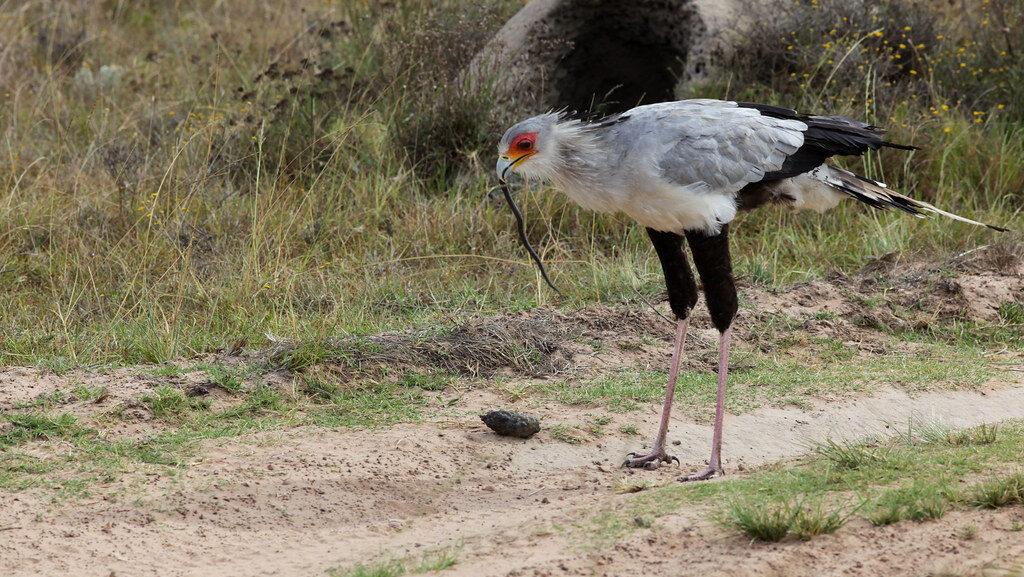
The secretary bird’s stomping ability is supported by specialized anatomical adaptations perfectly suited to their hunting strategy. Their legs, which can make up nearly 60% of their total height, contain elongated bones wrapped in powerful muscles that generate the tremendous force behind each strike. At the end of each leg is a relatively small foot with short, thick toes and blunt claws that are vastly different from the sharp curved talons of most raptors but perfectly designed for stomping impacts. The birds possess specialized tendons and ligaments in their legs that act as biological shock absorbers, preventing injury to their own bodies despite the violent forces generated during prey strikes. Perhaps most remarkable is the secretary bird’s ankle joint, which contains a unique locking mechanism that maintains rigidity during strikes while allowing flexibility for walking and running – a specialized adaptation not found in this configuration in any other bird species.
Learning to Stomp: How Young Secretary Birds Master the Technique
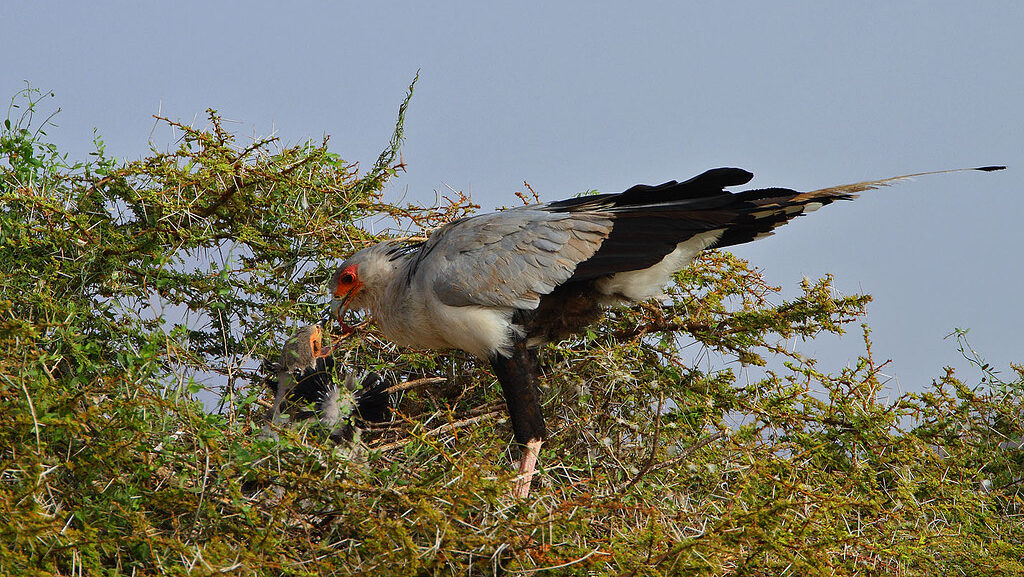
The stomping behavior of secretary birds combines innate instinct with learned skill, developed through a prolonged period of parental care and practice. Secretary bird chicks remain in the nest for up to three months, significantly longer than many other raptor species, during which time they observe their parents’ hunting techniques during feeding visits. Once fledged, juvenile birds spend several more months with their parents, practicing stomping techniques on inanimate objects, insects, and small prey before attempting to tackle more dangerous quarry like snakes. Researchers have observed parent birds demonstrating hunting techniques to their young, sometimes presenting partially disabled prey to juveniles to allow them to practice their stomping skills with reduced risk. This extended learning period is critical for young secretary birds to develop the precise timing, balance, and force control necessary for effective hunting, with observations suggesting that juveniles may take up to a year to fully master the complex biomechanics of the stomping technique.
Risk and Reward: The Dangers of the Stomping Strategy
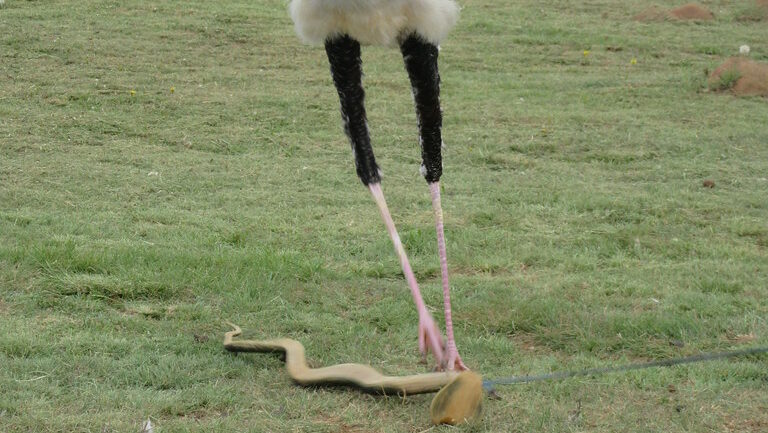
While the secretary bird’s stomping technique is remarkably effective, it is not without risks, particularly when confronting dangerous prey like venomous snakes. Despite their protective scale-covered legs, secretary birds can suffer serious injuries or even death from snake bites if their timing or aim is imperfect during an attack. The birds must maintain precise balance during stomping, as falling or stumbling could leave them vulnerable to counterattack from their prey. There is also significant energy expenditure associated with the stomping technique, requiring secretary birds to make calculated decisions about which prey are worth pursuing based on potential energy return versus risk. Observations of hunting secretary birds reveal that they typically retreat and reassess after unsuccessful strikes rather than persisting with diminishing returns, suggesting a sophisticated risk-reward calculation that maximizes their hunting efficiency while minimizing exposure to dangerous prey.
Cultural Significance: Secretary Birds in Human History and Mythology

The secretary bird’s remarkable hunting abilities have earned it a special place in the cultures and mythologies of many African societies throughout history. In ancient Egypt, images resembling secretary birds appeared in hieroglyphics, possibly symbolizing protection and vigilance due to the bird’s reputation as a snake killer. Many modern African cultures consider the secretary bird a symbol of good fortune and protection, with some communities imposing taboos against harming these beneficial predators that help control snake populations around human settlements. The bird’s distinctive appearance and behavior have made it the national emblem of Sudan, appearing on the country’s presidential seal and coat of arms as a symbol of strength and protection. Even the bird’s scientific name, Sagittarius serpentarius, reflects human fascination with its hunting prowess, translating roughly to “archer of snakes” – a poetic description of its precise, powerful strikes against serpentine prey.
Conservation Status: Threats to Africa’s Stomping Predators
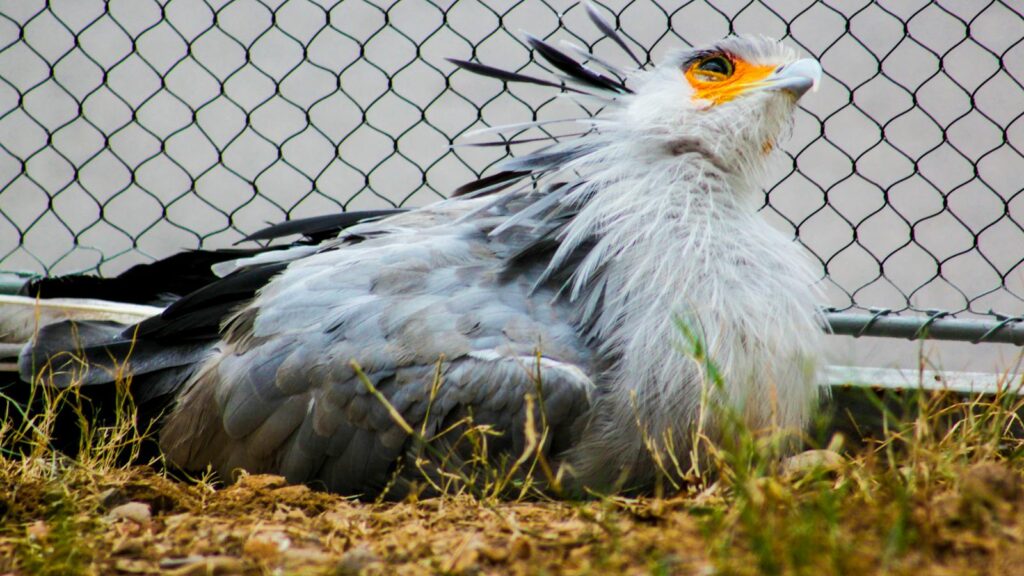
Despite their impressive adaptations and hunting skills, secretary birds face growing threats across their African range, leading to their classification as Endangered on the IUCN Red List in 2020 – a significant deterioration from their previous Vulnerable status. Habitat loss represents the most serious threat, as grasslands and savannas are converted to agricultural land or degraded by overgrazing, eliminating the open hunting grounds these birds require. Secretary birds are particularly vulnerable to habitat fragmentation due to their extensive home ranges, which can exceed 50 square kilometers for a breeding pair. Additional threats include collisions with power lines, road mortality, and secondary poisoning from pesticides used in agriculture that accumulate in their prey. Climate change presents another concerning threat, as altered rainfall patterns affect prey availability and potentially disrupt the breeding cycles of these specialized predators, with droughts becoming more frequent in many parts of their range.
Research Breakthroughs: New Discoveries About Stomping Mechanics
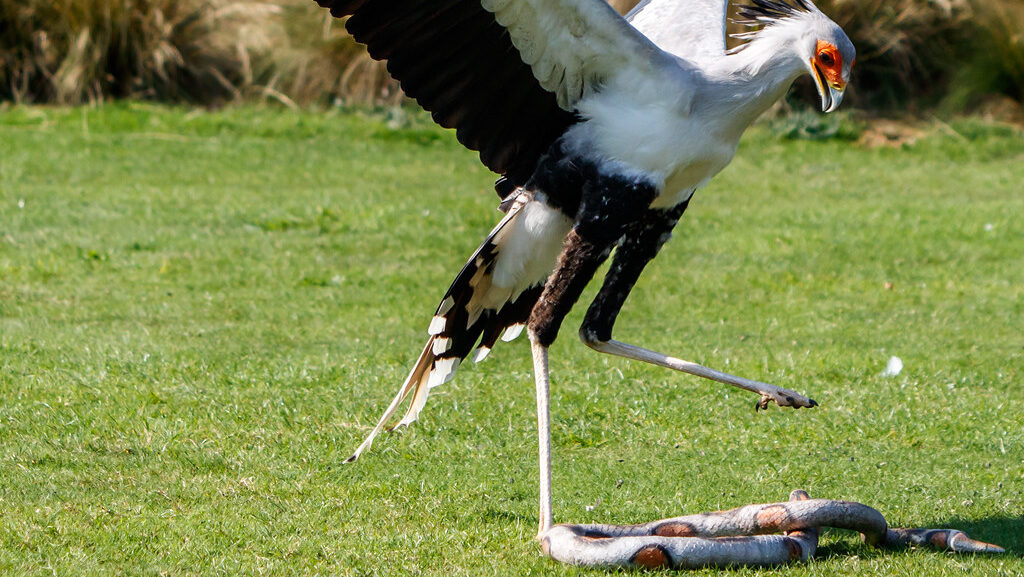
Recent scientific studies have revolutionized our understanding of the secretary bird’s remarkable stomping technique, with biomechanical research revealing unprecedented details about this hunting adaptation. In a groundbreaking 2016 study published in Current Biology, researchers used force plates and high-speed cameras to measure the striking force and speed of a secretary bird named “Madeleine” at the Hawk Conservancy Trust in the United Kingdom. The study revealed that these birds can deliver forces up to 195 Newtons through their feet – equivalent to five times their body weight – with the strike completed in just 15 milliseconds, making it one of the fastest documented predatory movements in the animal kingdom. Subsequent research has explored the neurological control mechanisms that allow such precise timing and force regulation, suggesting specialized neural pathways that may be unique to secretary birds. These scientific breakthroughs have inspired developments in robotics and biomimetic engineering, with researchers studying secretary bird mechanics to improve the design of bipedal robots and stability systems.
Predatory Adaptations: Comparing Secretary Bird Techniques to Other Hunters
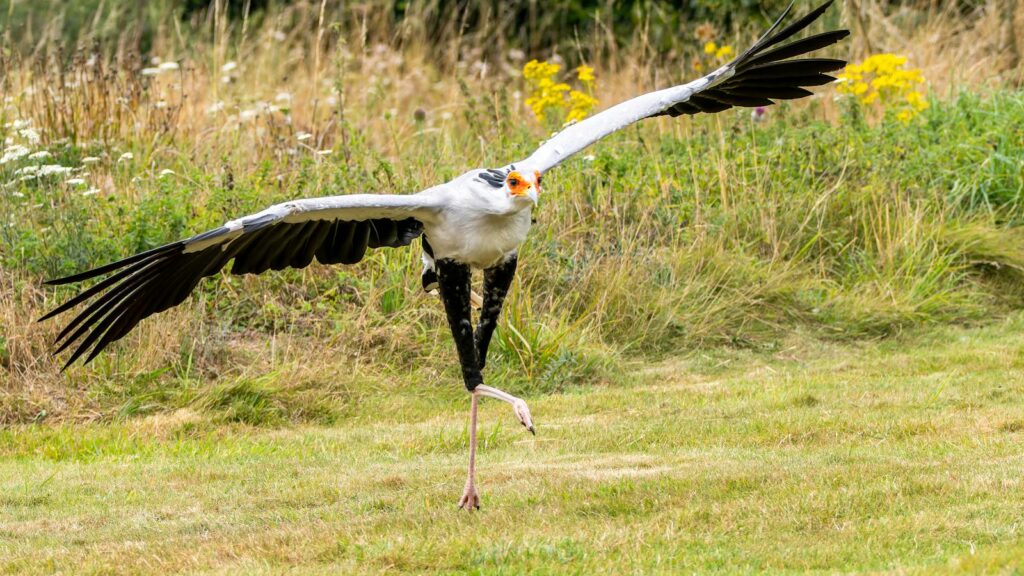
The secretary bird’s stomping technique represents a fascinating example of convergent evolution when compared to other predatory animals that have developed kicking or striking behaviors. Perhaps the closest parallel exists in the cassowary, a large flightless bird from Australia and New Guinea that delivers powerful kicks with dagger-like claws, though the cassowary uses this primarily as a defensive rather than hunting behavior. Certain marsupials like kangaroos and wallabies employ powerful kicks during combat, but again primarily for defense rather than prey capture. Among insects, the mantis shrimp delivers one of the fastest known strikes in the animal kingdom through its specialized appendages, though this occurs underwater rather than on land. What makes the secretary bird truly unique is the combination of avian flight capabilities with a specialized terrestrial hunting technique, representing an evolutionary middle ground between traditional raptors and ground-dwelling predators that has no direct equivalent elsewhere in the animal kingdom.
Protecting the Stompers: Conservation Efforts and Future Prospects
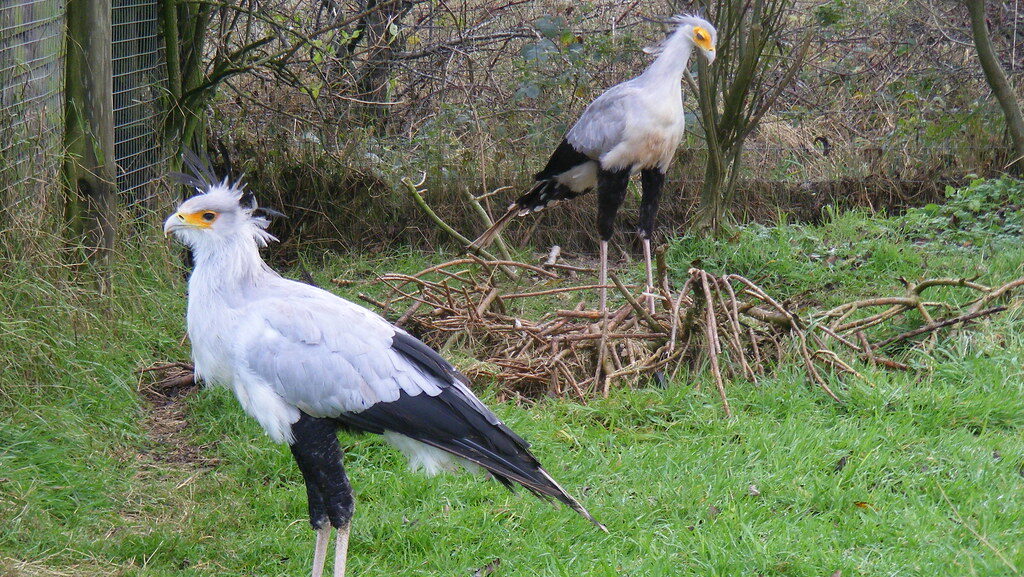
Conservation organizations across Africa are implementing various strategies to protect remaining secretary bird populations and ensure the survival of these unique predators. Protected area expansion and grassland preservation initiatives represent the most direct approach to safeguarding habitat, with conservationists working with rural communities to develop sustainable grazing practices that maintain the open structure of grasslands essential for secretary bird hunting. Satellite tracking programs have provided critical data on secretary bird movements and habitat requirements, helping to identify priority areas for conservation and better understand the threats these birds face across their range. Public education campaigns highlight the ecological importance of these snake-controlling predators, while rehabilitation centers work to treat and release injured birds, particularly those affected by collisions with infrastructure. While the conservation status of secretary birds remains concerning, the increased scientific attention and public awareness of their plight offers hope that effective protection measures can be implemented before population declines become irreversible.
Conclusion
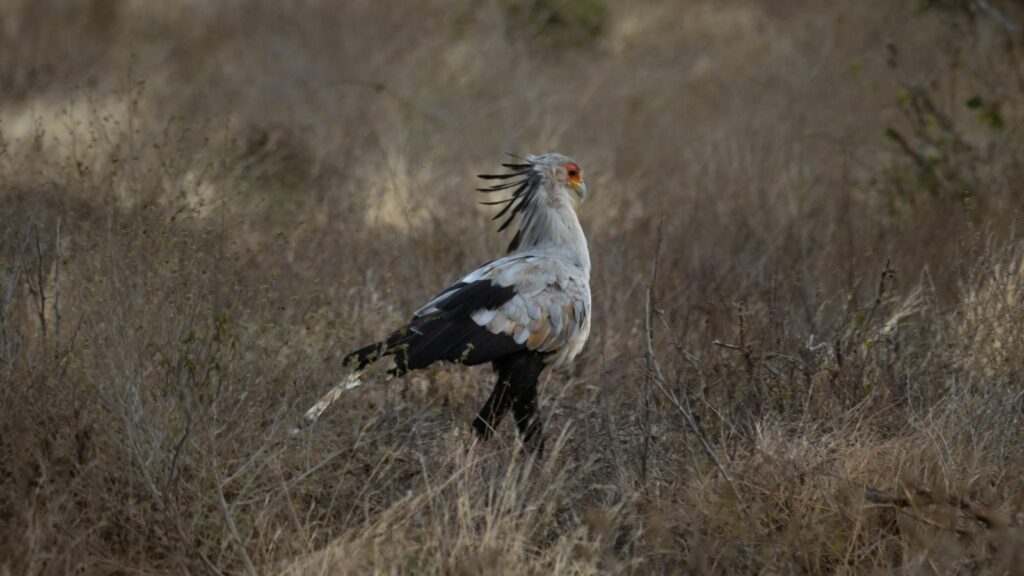
The secretary bird’s remarkable stomping hunting technique stands as one of nature’s most spectacular examples of specialized predatory adaptation. Through millions of years of evolution, these distinctive birds have developed a unique combination of physical attributes and behavioral strategies that allow them to thrive in African grasslands while tackling some of the continent’s most dangerous prey. From the biomechanical marvel of their spring-loaded legs to the precise neural control required for effective stomping, secretary birds represent a fascinating case study in evolutionary problem-solving. As researchers continue to unravel the secrets behind their stomping behavior, and conservation efforts work to protect remaining populations, we can hope that future generations will still have the opportunity to witness these remarkable avian stompers patrolling the African savanna, delivering their powerful kicks with precision and flair that continues to captivate human observers.
